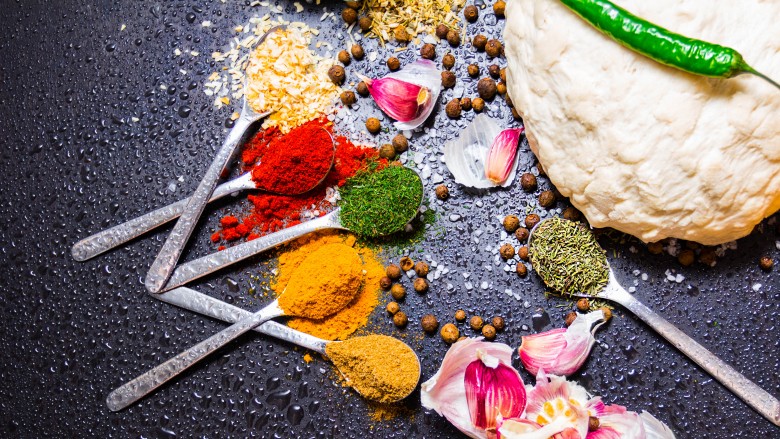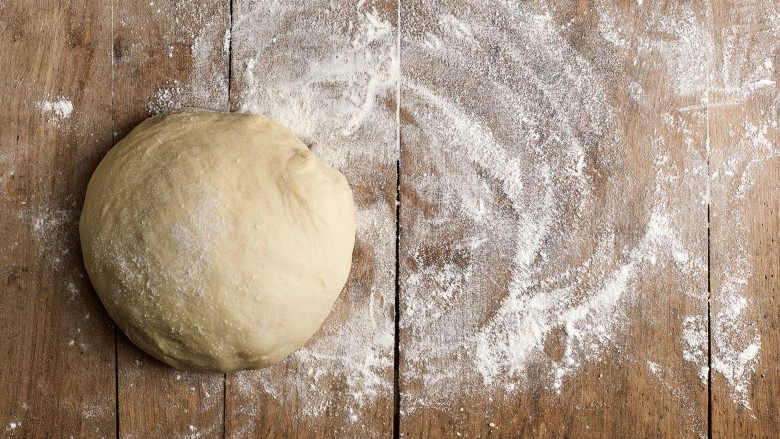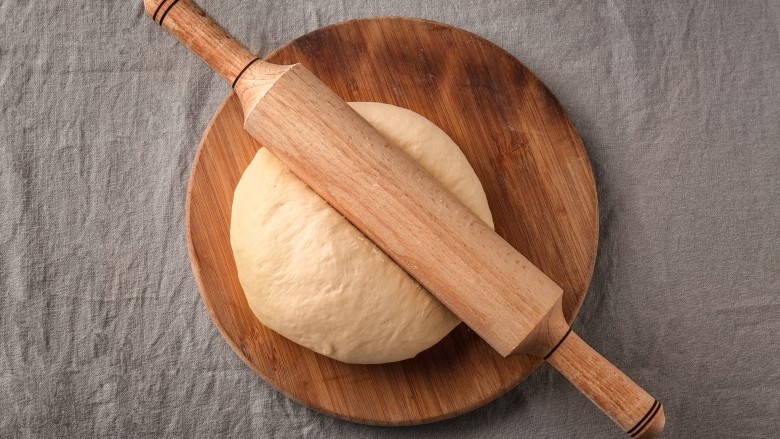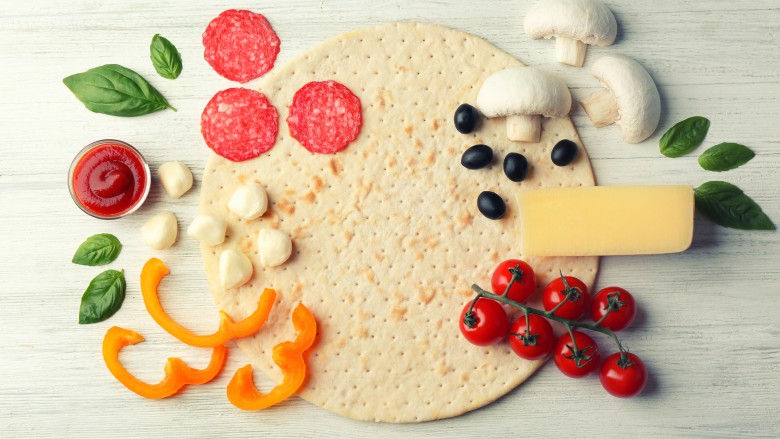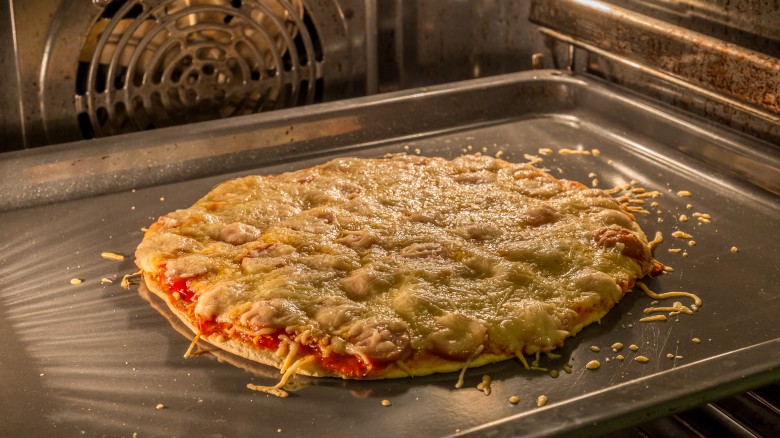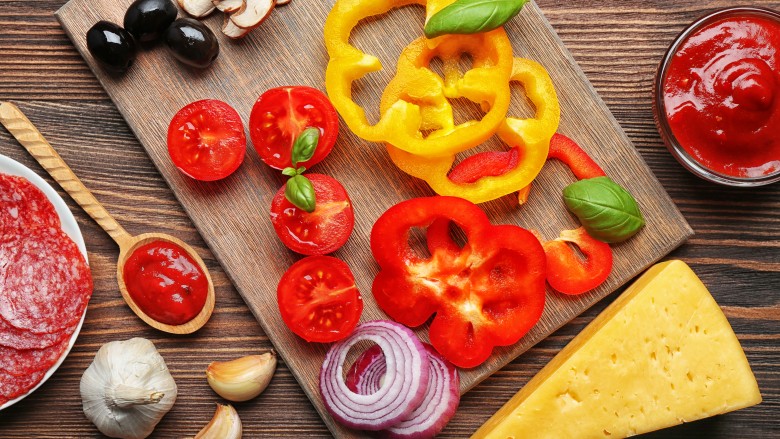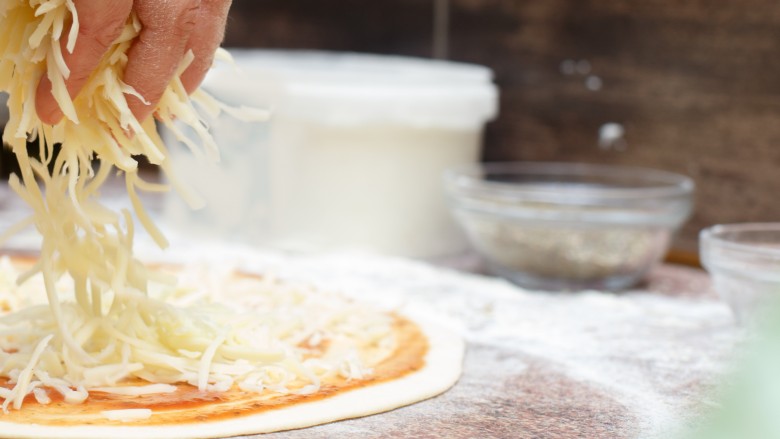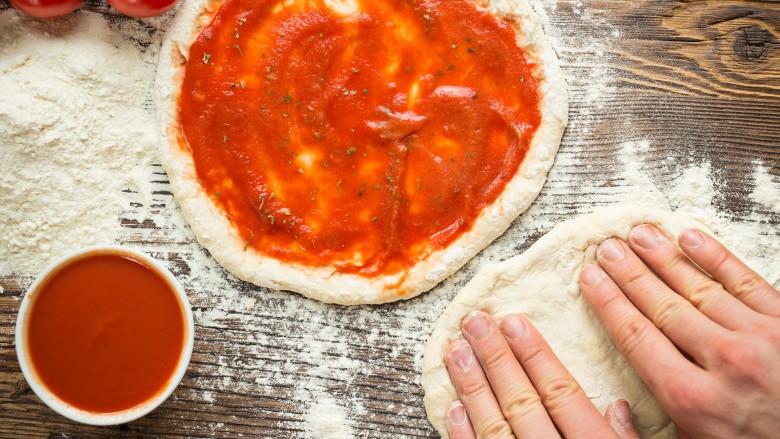Mistakes Everyone Makes When Making Pizza
Pizza is one of the simplest and most satisfying dishes to make at home. While it's easy to order in, biting into fresh, made-from-scratch pizza is so much more rewarding — and the process of making it is too much fun to pass up. From getting your hands a little dirty whipping up dough and making your own sauce to choosing the cheese and adding the toppings, there's no shortage of personalization when you eschew the local takeout menus.
Even though making pizza is easy, joyous, and delicious, avoiding a few common mistakes increases your chances for glorious pizza night experiences. From my experiences in the kitchen making pies (good and bad) to the ones at the table eating them, I've pulled together a short list of tips to help you steer clear of the frequent don'ts of pizza-making.
Improperly seasoning the dough
When it comes to making pizza, the dough is just as important as the sauce and the toppings. As such, you want to season that foundation with major TLC during the mixing and kneading part of the process. Doing so takes your crust to the proverbial next level once it's baked. A bland crust sets the stage for a mediocre pizza experience. Don't let that happen to you.
Since you really can't go wrong with classic Italian seasonings that are at once flavorful and fragrant, try incorporating beloved go-tos into your pizza dough mix. Consider heavy-hitters like oregano, basil, and thyme in addition to dashes of supportive seasonings like garlic and onion powders for extra oomph.
Not setting the dough aside for a few minutes before stretching out
If you're using store-bought dough or you're taking your own homemade version out of the fridge, you're likely dealing with a cold ball of dough that's hard and difficult to manipulate with your hands. The struggle might cause you to overwork the dough, which can contribute to a dense texture that no one wants to bite into.
Instead of straining your muscles in an effort to wrangle frigid, uncooperative pizza dough, try removing it from the fridge and setting it aside for at least five minutes before stretching. Doing so allows the dough to come closer to room temperature, making it softer and more malleable. Once it gets to that workable stage, get in there and stretch away.
Using a rolling a pin to roll out the dough
Even though some homemade pizza recipes might direct you to use a rolling pin to roll out your dough, I would advise against it. It's just too harsh! When you repeatedly run a pin over the dough, you're essentially overworking it and rolling over all of those lovely air bubbles that contribute to a light and airy finished crust.
While you don't need to be able to throw the dough back and forth in your hands like a professional pizza maker, your pizza will be better served by skipping the rolling pin. Save it for when you're rolling out pie crust. All you need to do is make sure to temper your dough so it's not too cold to work with, then using the heel of your hands and your fingertips, gently nudge and stretch the dough to the desired thickness. If you find that it shrinks back, that means you need to let it rest for a few minutes before resuming, as it's either still too cold or slightly overworked.
Using store-bought sauce
You've set aside your phone and decided to go through the trouble of making your own pizza. That's great! So then why would you then use store-bought sauce for this homemade endeavor? It seems counterintuitive. More often than not, the red sauces you find at the supermarket are high in sodium and sugar, along with additives you may shudder to think about.
Resist the ease of using pre-made sauce and opt for making your own. Whether you use a fresh sauce or one that's simmered for an hour, the actual process for making pizza sauce is shockingly easy. I'm a big fan of this simple red sauce from Bon Appetit, as it requires no extra cooking time and comes together in less than five minutes. With a simple food processor, you can whip up fresh tomato sauce that's perfect for any pie.
Overloading on toppings
You know the age-old fashion advice to remove one accessory before leaving the house? That applies to pizza-making. While it may seem exciting to add lots of creative toppings to your pie, doing so turns the finished product into a unevenly cooked, soggy mess. Don't fall prey to the temptation to overaccessorize your pizza. Take this advice from someone who has made a lot pizza at home and has gotten too overzealous with the toppings herself.
Think instead about the balance of flavors you want for your pizza. A salty cured meat like prosciutto might pair well with a simple garnish of arugula, roasted red peppers may offer nice contrast to a handful of flavorful olives, and bacon can perhaps lend saltiness to an otherwise plain pie. Whatever you do, keep it simple and include no more than two or three toppings.
Using parchment paper to bake the pizza
Parchment paper seems too pricey to me to use willy-nilly. I would avoid using it unless you need to — and I firmly believe pizza bakes better without it. While this baking paper is terrific for making sure your cookies and cake don't stick to the pan, it prevents pizza dough from reaching its full crispy potential. As a barrier between the crust and the pan, it doesn't allow the pizza to get hot enough to char in all the right places.
Instead, try oiling a rimmed baking sheet and stretching the pizza dough directly in the pan. You can also heat a baking stone and carefully transfer your stretched dough onto it. If you feel absolutely inclined to use parchment paper in some way, build your pizza on a sheet of it, then gently move the pizza to a baking sheet or stone. Direct contact with the heat source makes a world of difference when you're going for that coveted, just-right crisp.
Baking the pizza in an oven that's not hot enough
When I worked as a professional baker, one of the more senior folks in the kitchen reminded me that fearful bakers bake at low temps — she was not so subtly telling me that I was too frightened of high heat. While you most likely don't have access to a hot-as-hell wood-burning oven, you too will have to overcome any trepidation of high heat in order to produce amazing pizza at home. While slow and steady wins the race for some foods, pizza is not one of them.
Turn your oven up to the highest temperature short of broiling. That's probably 500 degrees in most home ovens. Baking your pizza at maximum heat for a shorter period of time helps you avoid having to confront limp crust, burnt toppings, and sad feelings. Be brave!
Not precooking particular toppings
There are many quick-cooking pizza toppings that require little of you. Chop them up, thrown them on the pie, and plop the whole thing into the oven. These include cured meats, mushrooms, and the like. That said, beware of the toppings that need to be cooked before you bake your pizza.
Heartier veggie toppings like cauliflower or broccoli need more time to cook than the time it takes to bake a pizza. Likewise, raw sausage and other meats may require longer cooking times. As such, be sure to saute the vegetables or brown the meat before adding them to your pizza. Doing so ensures that everything finishes cooking at the same time.
Using too much cheese
While the idea of pizza with too much cheese seems ludicrous, there is indeed a limit to the amount of rich dairy one should pile atop their pizza. Hey, I love hot melted cheese as much as the next person, but pizzas with an excess of the good stuff tend to bake up super greasy, way too heavy, and altogether unmanageable.
Don't be shy about cheese on pizza, but be sure to exercise some degree of restraint. You don't want to sop up grease with wads of napkins, and you certainly don't want the crust to fall apart under the monumental weight of all that cheese. Go easy.
Stretching the dough too thin
If you consider that the dough makes up the entire foundation of the pizza, you can understand why one that's stretched too thin can be problematic. In order to withstand the average weight of sauce, cheese, and additional toppings, your pizza dough needs to be thick and strong enough for the job. Stretch and nudge as needed, but be careful not to take it too far.
What is too far? Well, ideally, pizza dough should be stretched until it's about between ⅛ inch and ¼ inch thick, depending on whether you're a thin-crust aficionado or a thick-crust lover.
Removing the pizza from the oven too soon
As a human, I want to remove the pizza from the oven as soon as I start to smell it in the kitchen. Hot pizza evokes that kind of anticipation. That said, try not to take your pizza out prematurely. If you remove from the oven too soon, the pizza might not be as fully cooked as you think.
Even once the cheese has melted and the toppings appear cooked through, the dough underneath may not be fully finished cooking. Biting into raw dough is a pretty frustrating thing. To ensure that you have a perfectly done pizza on your hands, allow it to stay in the oven up to 5 minutes longer than you think is needed. Good pizza is worth the wait, right?
While these guidelines are not set in (pizza) stone, they've helped me enjoy making pizzas so much more over the years. I think you'll feel the same way soon enough. The good news? Even a bad pizza still tastes pretty great, so you're basically set up for relative success!

